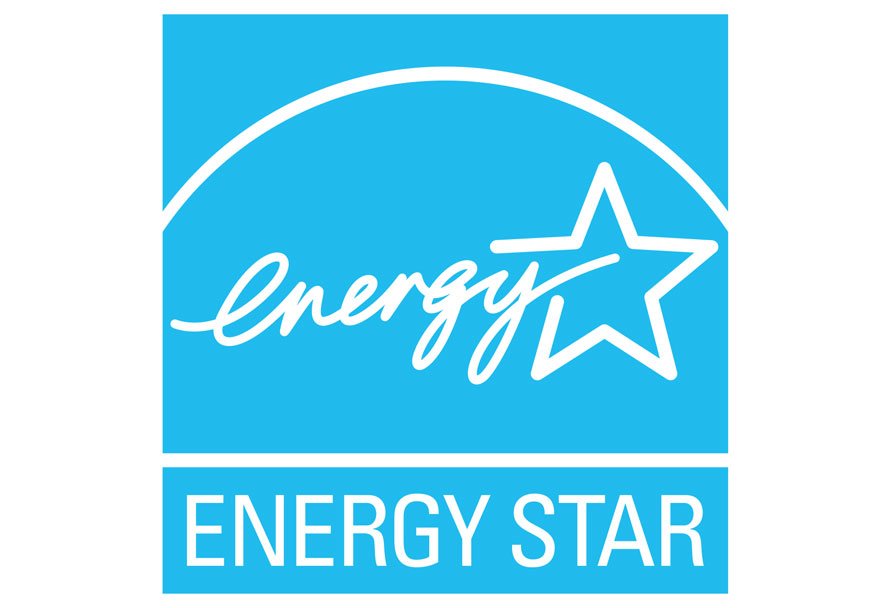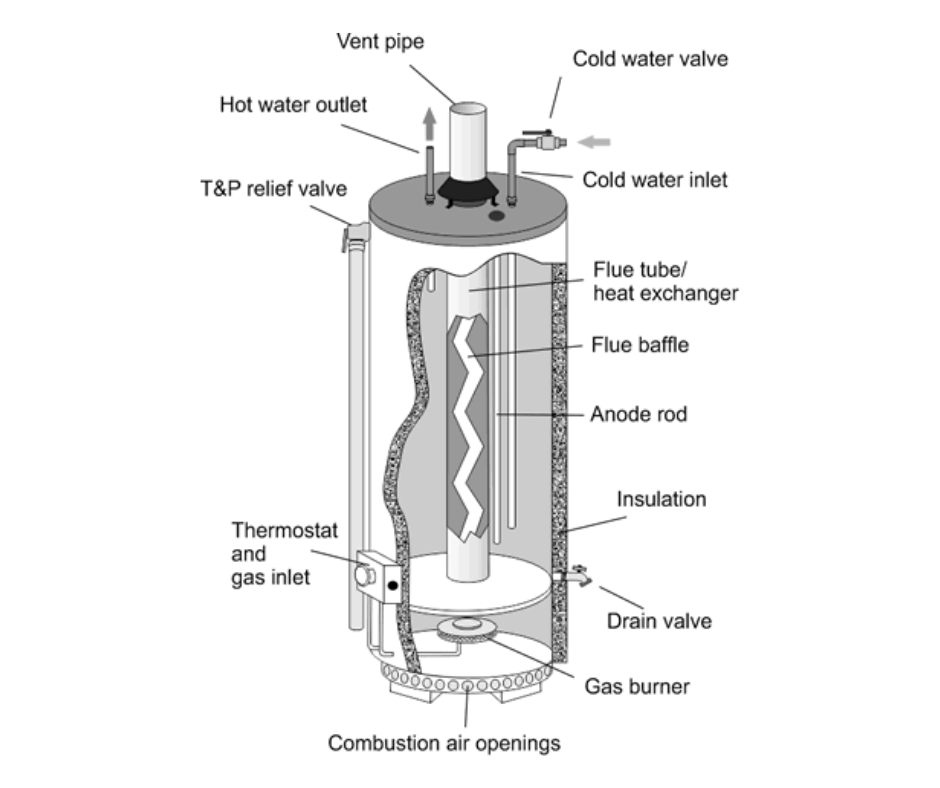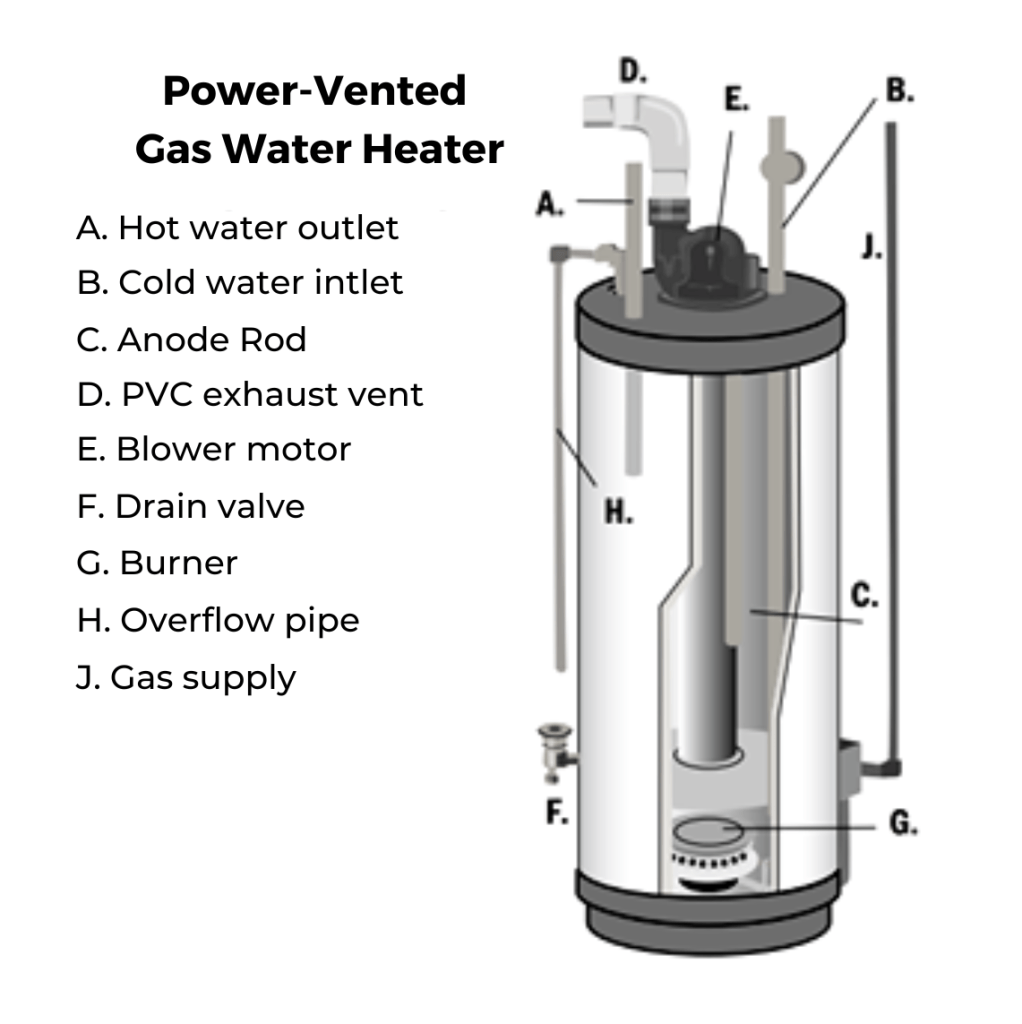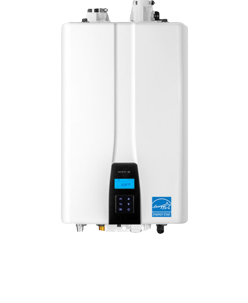Hot Water Heaters
THE APPLIANCE YOU RELY ON EVERYDAY
An Everyday Essential For Your Home
Besides furnaces and air conditioning, hot water tanks are the biggest energy consumer in your home, consuming nearly 20% of your total household energy. In fact, according Natural Resources Canada, the average person uses 75L of hot water per day and the average Canadian household uses 225 L. Showers, faucets, washing machines, dishwashers – all the hot water adds up, and so does the fuel! Four Seasons is dedicated in working closely with wholesalers and manufacturers to offer the most reliable hot water heater options with the best performance. We offer standard hot water tanks, high efficiency hot water tanks and tankless water heaters for all types of hot water needs.
Check out our tankless Navien hot water heaters and Bradford White hot water tanks below:


What Is An Ef Factor? What Is An Fhr Rating?
The EF (Energy Factor) is the efficiency rating of gas fired hot water heaters. Mathematically, it is the amount of hot water energy divided by the total amount of energy used by the hot water tank over a 24-hour period. The EF accounts for standby losses when hot water is not being used and the operating efficiency of the tank when it is heating water. When comparing tanks, a higher EF indicates higher efficiency.
The FHR (First Hour Rating) measures how much hot water the tank can supply during the first hour starting with a full and heated tank. When considering your hot water needs this should match or exceed your households maximum estimated hot water use in your house in the first hour. The higher the FHR, the more hot water the tank can deliver during the peak use time. FHR is a better indicator than tank size of providing your family with the hot water it needs.

Tankless Hot Water Heaters
Tankless water heaters also known as “on-demand” water heaters are an energy efficient solution to save you on your hot water needs. Here’s how they work:
- When you call for hot water in your home, cold water enters the unit.
- The cold water passes over the heat exchangers, being heated to the set temperature, and then sent to your hot water taps/appliances.
- As this is a highly efficient product, it does create condensation in this process, this is drained from the unit.
This operation allows for unlimited hot water in the home as it is heated “on-demand” and not stored in a tank. Tankless water heaters offer up to 97% energy efficiency rating which will greatly reduce your energy bills. They are a significant space saver and a perfect solution for tight installation locations. While these units offer many benefits – they do require more maintenance than the standard hot water tank. In Alberta, we have hard water that builds up calcium and mineral deposits in our appliances and homes. This build up needs to be flushed from your tankless unit annually to operate at its peak efficiency and avoid breakdowns. Check out our tankless water heater maintenance for more information.

Standard Natural Draft Hot Water Tanks
Standard natural draft or “atmospheric” hot water tanks are the basic model of water heater that is simple in operation and design. These water heaters have open combustion chambers which use the air in your home for. Here’s how they work:
- The gas burner at the bottom of the tank heats the water inside the tank to the set temperature.
- Combustion gases are drawn out of the tank and up through a chimney by the natural buoyancy of the heated air.
- Hot water that is already heated is stored in the tank and drained as it is being used in the home. If there is too much demand for hot water in the home, it could run out of hot water as the tank has a limited capacity.
Standard natural draft hot water tanks require minimal maintenance to maintain. Check out our hot water heater service for more information.

Power Vented Hot Water Tanks
Power vented hot water tanks are similar in operation to a standard tank, however they have a blower motor on top of the tank connected to a vent that exhausts combustion gases. They can offer increased efficiency for more energy savings and flexibility with installation. Power vented tanks come in either single or dual pipe venting, here are the differences:
Single Pipe Power-vented tank – On the top there is one exhaust vent with a blower motor to push out combustion gases. This hot water heater can be installed where natural draft venting is not possible.
Dual Pipe Power-vented tank – Two pipes, one pipe is connected to exhaust the combustion gases, while the second pipe is used for fresh air intake. This intake draws in fresh air from outside to provide combustion air for the gas burner. The dual power-vented water heaters are more efficient than the single power-vented tanks as they draw air outside for combustion rather than relying on air from inside the home. The increased air flow optimizes the sealed gas burner operation creating more efficient operation.







